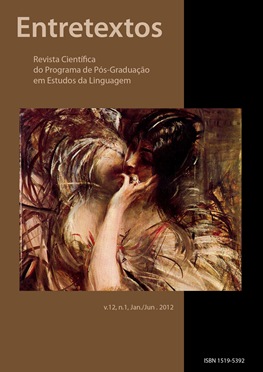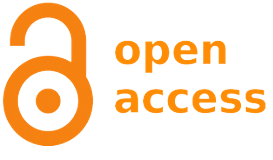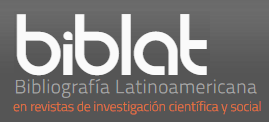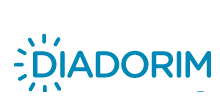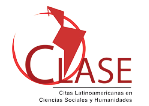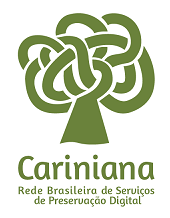The foreign language of today, yesterday and tomorrow taught in Basic Education
DOI:
https://doi.org/10.5433/1519-5392.2012v12n1p114Keywords:
Teaching, Foreign Language, Historical ReasonsAbstract
This study aims to bring a historical perspective for the teaching of a foreign language, and to show that the choice of one language or another has no pedagogical reasons, but political. It is the reflection on the deployment of foreign language teaching in Brazil, more specifically in the state of Sao Paulo, when it began, its reasons, its choices and coverage. It also emphasizes the importance of several methodological trends shown over the years, which impact they had, their characteristics and the influence they still exert in foreign language teaching. The theoretical background retakes the federal and state legislation on the teaching of a foreign language and some authors who thought about language like: Saussure (2006), Chomsky (1975), Vygotsky (1989) and Bakhtin (1988). From this reality, it intends to reinforce the importance of studying this discipline to form a critical citizen, conscious and respectful to the culture of others, realizing that more than the grammar of a language, it is important to understand the worldviews that determine it and to rethink the language as an important aspect of the culture of a people and something fundamental to their identity.Downloads
References
BAKHTIN, M. Marxismo e filosofia da linguagem. São Paulo: Hucitec, 1988.
BOHN, H.I. O Método "soberano" para o ensino e aprendizagem da língua inglesa. LIMA, Diógenes Cândido (org.). Ensino e Aprendizagem de Língua Inglesa: conversas com especialistas. São Paulo: Parábola Editorial, 2009
BORGES, J. C. História da Serra. Disponível em: http://www.clerioborges.com.br/temiminosparanapua.html. Acesso em: 18 jul. 2011.
BRASIL.Casa Civil. Lei 11.161, de 05 de agosto de 2005.Disponível em: http://www.planalto.gov.br/ccivil_03/_Ato2004-2006/2005/Lei/L11161.htm. Acesso em: 18 jul. 2011.
BRASIL. Lei de Diretrizes e Bases da Educação 4024, de 20 de dezembro de 1961. Disponível em: http://wwwp.fc.unesp.br/~lizanata/LDB%204024-61.pdf. Acesso em: 18 jul. 2011.
BRASIL. Lei de Diretrizes e Bases da Educação 5692, de 11 de agosto de 1971. Disponível em http://www.pedagogiaemfoco.pro.br/l5692_71.htm. Acesso em 18/07/2011.
BRASIL. Lei de Diretrizes e Bases da Educação 9394, de 20 de dezembro de 1996. Disponível em http://portal.mec.gov.br/arquivos/pdf/ldb.pdf. Acesso em: 18 jul. 2011.
BRASIL. Ministério da Educação e do Desporto. Secretaria de Educação Fundamental. Parâmetros curriculares nacionais: língua estrangeira. Brasília: MEC/SEF, 1998.
BRASIL. Ministério da Educação e do Desporto. Secretaria de Educação Fundamental. Parâmetros curriculares nacionais: ensino médio: língua estrangeira. Brasília: MEC/SEF, 1999.
CHOMSKY, N. Aspectos da Teoria da Sintaxe. Coimbra: Armênio Armado, 1975.
FOGAÇA, F. C.; GIMENEZ, T. O ensino de línguas estrangeiras e a sociedade. In: Revista Brasileira de Lingüística Aplicada, v.7 n.1 UFMG, 2009.
GIMENEZ, T. Ensinar a aprender ou ensinar o que aprendeu? In: LIMA, Diógenes Cândido (org.). Ensino e Aprendizagem de Língua Inglesa: conversas com especialistas. São Paulo: Parábola Editorial, 2009.
JORGE, M.L.S. Preconceito Contra o Ensino de Língua Estrangeira na Rede Pública. In: LIMA, Diógenes Cândido (org.). Ensino e Aprendizagem de Língua Inglesa - Conversas com Especialistas. São Paulo: Parábola Editorial, 2009
LEFFA, V. J. O ensino de línguas estrangeiras no contexto nacional. Contexturas, APLIESP, n. 4, 1999.
MARCUSHI, L. A. O papel da lingüística no ensino de línguas. Disponível em: http://marcosbagno.com.br/site2/conteudo/arquivos/for_marcuschi.htm. Acesso em: 18 jul. 2011.
MOITA LOPES, L. P.; ROJO, R.. H. R. Linguagens, códigos e suas tecnologias. In: Brasil/ DPEM Orientações curriculares do ensino médio. Brasília: MEC, 2004.
PARANÁ. Secretaria de Estado da Educação. Diretrizes Curriculares da Educação Básica. Língua Estrangeira Moderna .Paraná. Curitiba, 2008.
PERRENOUD, P. Dez novas competências para ensinar. Porto Alegre Artmed Editora, 2000.
PIAGET, J. Psicologia e Epistemologia: por uma teoria do conhecimento. São Paulo: Ed. Forense, 1973.
PICANÇO, D. C. L. História, memória e ensino de espanhol (1942-1990). Curitiba: UFPR, 2003.
RAJAGOPALAN, K. O Inglês como língua Internacional na Prática Docente. In: LIMA, Diógenes Cândido (org.). Ensino e Aprendizagem de Língua Inglesa: conversas com especialistas. São Paulo: Parábola Editorial, 2009
RODRIGUES, A. D. Línguas indígenas: 500 anos de descobertas e perdas. D.E.L.T.A, São Paulo, 1993.
SÃO PAULO. Secretaria de Estado da Educação. Proposta Curricular para o Ensino Fundamental (Ciclo II) e Ensino Médio. Língua Estrangeira Moderna. Disponível em: http://www.rededosaber.sp.gov.br/portais/Portals/18/arquivos/Prop_LEM_COM P_red_md_20_03.pdf. Acesso em: 19 jul. 2011.
SAUSSURE, F. Curso de Lingüística Geral. 27.ed. São Paulo: Cultrix, 2006.
VYGOTSKY, L. S. Pensamento e linguagem. 2.ed. São Paulo: Martins Fontes, 1989
Downloads
Published
How to Cite
Issue
Section
License
Copyright (c) 2012 Entretextos

This work is licensed under a Creative Commons Attribution 4.0 International License.
Entretextos adota a Licença Creative Commons Attribution 4.0 International, portanto, os direitos autorais relativos aos artigos publicados são do/s autor/es.
Sob essa licença é possível: Compartilhar - copiar e redistribuir o material em qualquer suporte ou formato. Adaptar - remixar, transformar, e criar a partir do material, atribuindo o devido crédito e prover um link para a licença e indicar se mudanças foram feitas.

